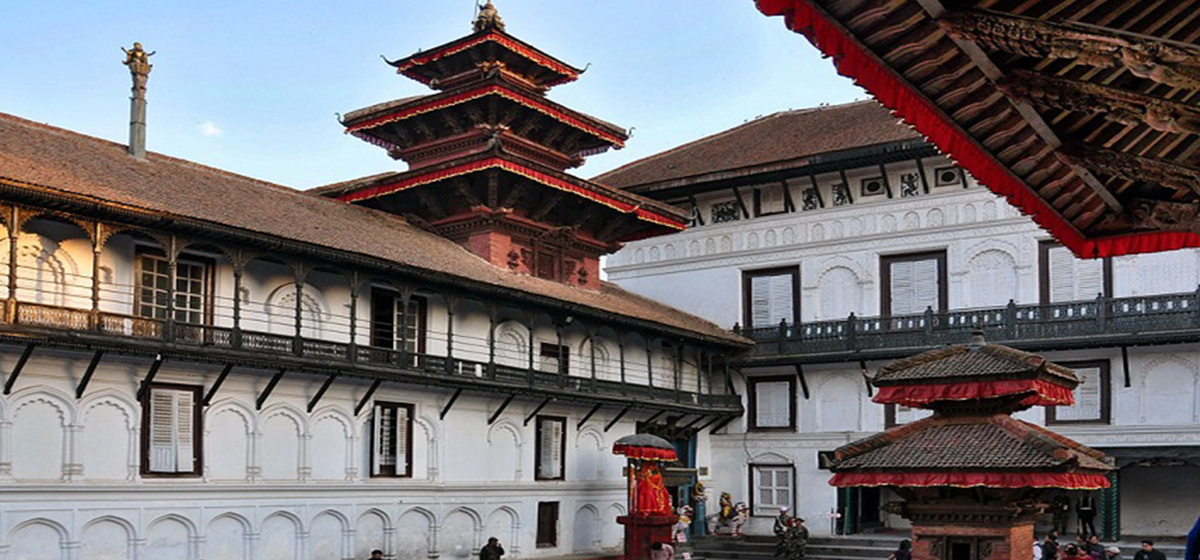
KATHMANDU, AUG 8: The Office of Municipal Executive of Kathmandu Metropolitan City (KMC) has collected an amount of Rs 177.3 million from tourism and other service fees levied on tourists visiting the Hanuman Dhoka Durbar Area in the fiscal year 2023/24. The Hanuman Dhoka Palace Management and Conservation Office has collected the amount in the fiscal year 2023/24 including tourism and filming fees and the sale of tender forms.
In the fiscal year 2023/24, as many as 38,480 foreign tourists visited Hanuman Dhoka Durbar, and the highest amount was collected from the foreign tourists visiting fees. According to the data of the office, Rs 176.9 million has been collected from foreign tourists visiting fees, Rs 335,000 from filming fees and Rs 10,000 from the sale of tender forms.
Sarbagya Ratna Shakya, the collector of the office, said, “The office has collected the highest amount from tourism fees. Meanwhile, the office has collected Rs 176.9 million from tourism service fees in the fiscal year 2023/24. Recently, there has also been a significant growth in the amount of service fee along with the increase in the number of tourists visiting the Hanuman Dhoka Palace area.
Stating that the fee collection almost doubled in the fiscal year 2023/24 as compared to the fiscal year 2022/23, Shakya said, "The fee collection has also increased, along with the increase in the number of tourists entering Nepal.” According to the data of the office, an amount of Rs 98.58 million was collected from tourism and filming fees and tender form sales from Hanuman Dhoka Durbar area in the fiscal year 2022/23, while it reached almost Rs 180 million in FY 2023/24.
The office has collected Rs 24.24 million from mid-October to mid-November alone, which is more than the amount collected in any other month of the year 2023/24. A significant amount of Rs 24.24 million was collected in Hanuman Dhoka Durbar area from mid-March to mid-April.
Similarly, a total amount of Rs 16.58 million and Rs 12.32 million were collected respectively from mid-march to mid-April (Chaitra) and from mid-May to mid-June (Jestha). In these four months alone, the office collected Rs 82.71 million from tourism and filming fees and sale of tender forms.
Stating that many tourists arrive during festivals and Jatras, Shakya said, “More tourists arrive in Nepal during festivals and Jatras compared to other months.”
He added, “Due to the monsoon season in June, many tourists did not enter Nepal while this season is also an off-season period. However, the number of tourists gradually increases from July and August.
The Hanuman Dhoka Durbar Square Conservation Program has been charging foreign tourists fixed entry fees. The office has been charging tourists from SAARC countries an entry fee of Rs 500 per person and tourists from other countries Rs 1,000 per tourist.
After paying the fees, the foreign tourists can visit the Hanuman Dhoka Durbar area. After the entry fee is paid, tourists can visit the area as many times as they want during their stay in Nepal. For this privilege, the office issues them a card. Meanwhile, Rs 345,000 have been collected from filming fees and Rs 10,000 from the sale of tender forms.
Likewise, the office has been charging 20,000 for the shooting of big screen films and Rs 10,000 for music videos. Shakya said that foreigners are allowed to shoot in that area after paying Rs 55,000 for foreign films and 25,000 rupees for music videos.
Hanuman Dhoka Durbar area is one of the renowned tourist destinations not only in Nepal but also in the world. It is considered as historically and culturally significant for Nepal. The Hanuman Dhoka Durbar area is also listed in the UNESCO World Heritage List.
Furthermore, the construction of the Hanuman Dhoka Durbar Area is believed to have begun in the 3rd century and various structures were added over time. Similarly, there are historical temples from the 16th century, which were constructed in the period of the Malla kings in the outer complex.


Leave A Comment